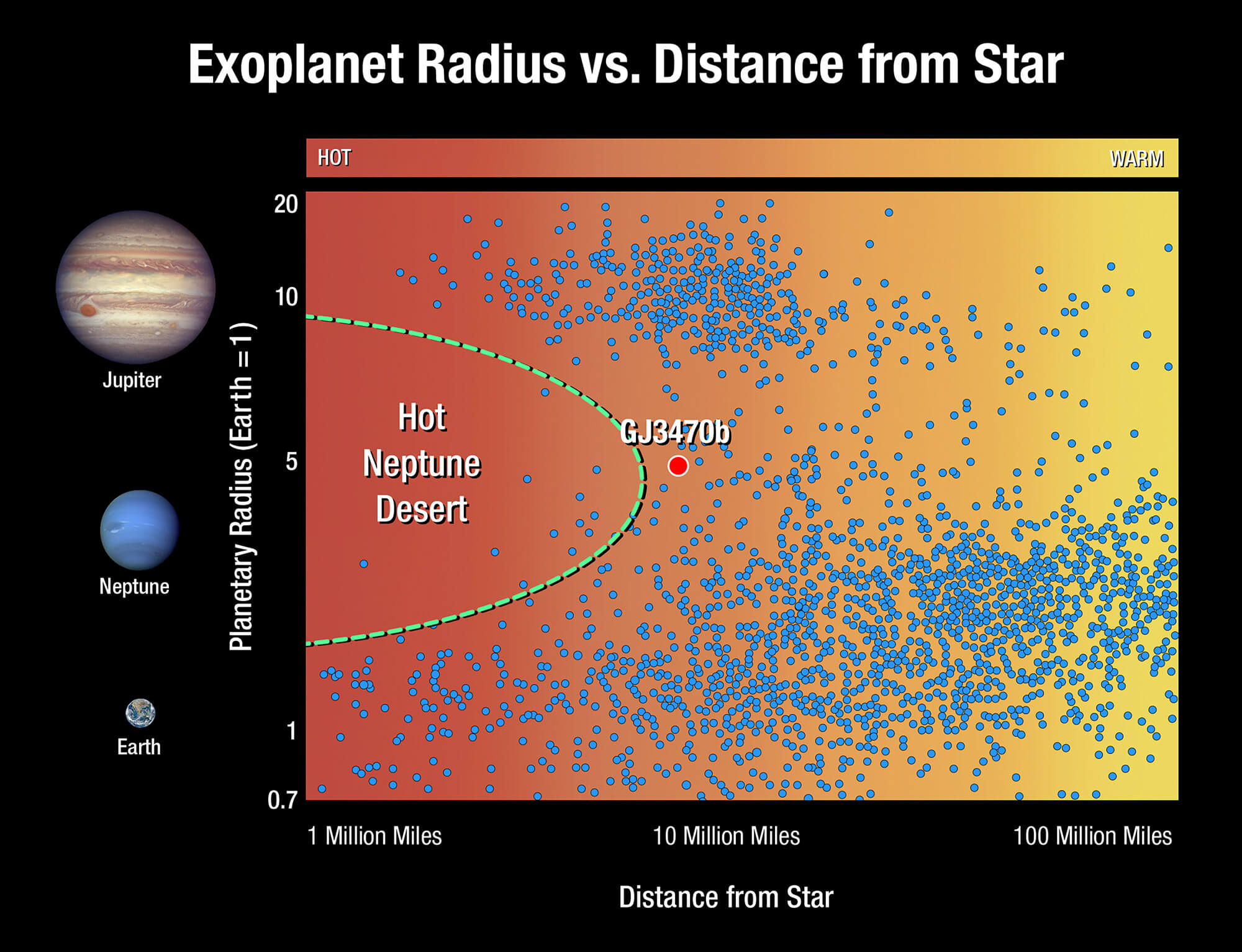An exoplanet losing hydrogen at tremendous speed under the influence of the radiation of its star will help uncover the long-standing secret of the shortage of hot Neptune.
Where did the hot Neptune go? This is a question that astronomers have been asking themselves for a long time after they encountered a mysterious absence of planets the size of Neptune in close proximity to their parent stars. Now it seems we have the answer. We found that one of the similar worlds is losing its atmosphere at a frantic pace. This observation supports the theory that the hot Neptunes have lost most of their shell and turned into smaller planets called super-Earths, of which there are much more.
Fishermen would be perplexed if they caught only big and small fish, and medium-sized fish would come across very rarely. This is similar to what happens with astronomers who hunt exoplanets. They discovered a large number of hot exoplanets the size of Jupiter and many worlds a little larger than Earth. However, there are practically no planets close to their stars and comparable in size to Neptune. This mysterious “desert” of hot Neptune suggests two explanations: either such extrasolar worlds are rare, or once there were many, but then they disappeared for some reason.
A few years ago, astronomers, using the Hubble space telescope, discovered that the warm neptune GJ 436b was losing hydrogen from its atmosphere. The calculated runaway speed was not enough to threaten the atmosphere of GJ 436b, but she suggested that the similar world to her, receiving more energy from its star, could evolve more dramatically.
Scientists saw just such a scenario, looking with the same Hubble on the exoplanet GJ 3470b, which, as it turned out, loses hydrogen 100 times faster than GJ 436b. Both planets are at a distance of about 6 million kilometers from their star (10 times less than the distance from Mercury to the Sun), but the star, in whose system GJ 3470b is located, is still very young and active.
The discovery of atmospheric evaporation in two warm Neptunians is encouraging, but the authors of the study do not rush to conclusions, since it is necessary to obtain more data to confirm the new idea. Unfortunately, the hydrogen that escapes from these planets cannot be detected at a distance of more than 150 light years from Earth (GJ 3470b is at a distance of 97 light years), since its spectrum is lost by interstellar gas.
To solve this problem, astronomers plan to use Hubble to search for other runaway gases, because hydrogen can pull heavier elements like carbon. Helium can also come to the rescue, the infrared radiation of which is not blocked by the interstellar medium.
Helium will broaden the spectrum of our research, and the high sensitivity of the James Webb space telescope should help us with this.
-Vincent Bourrier, lead author of the study from the University of Geneva (Switzerland)
Hunt for hot Neptunes
Click To Tweet
The post Hunt for hot Neptunes appeared first on Upcosmos.com.
